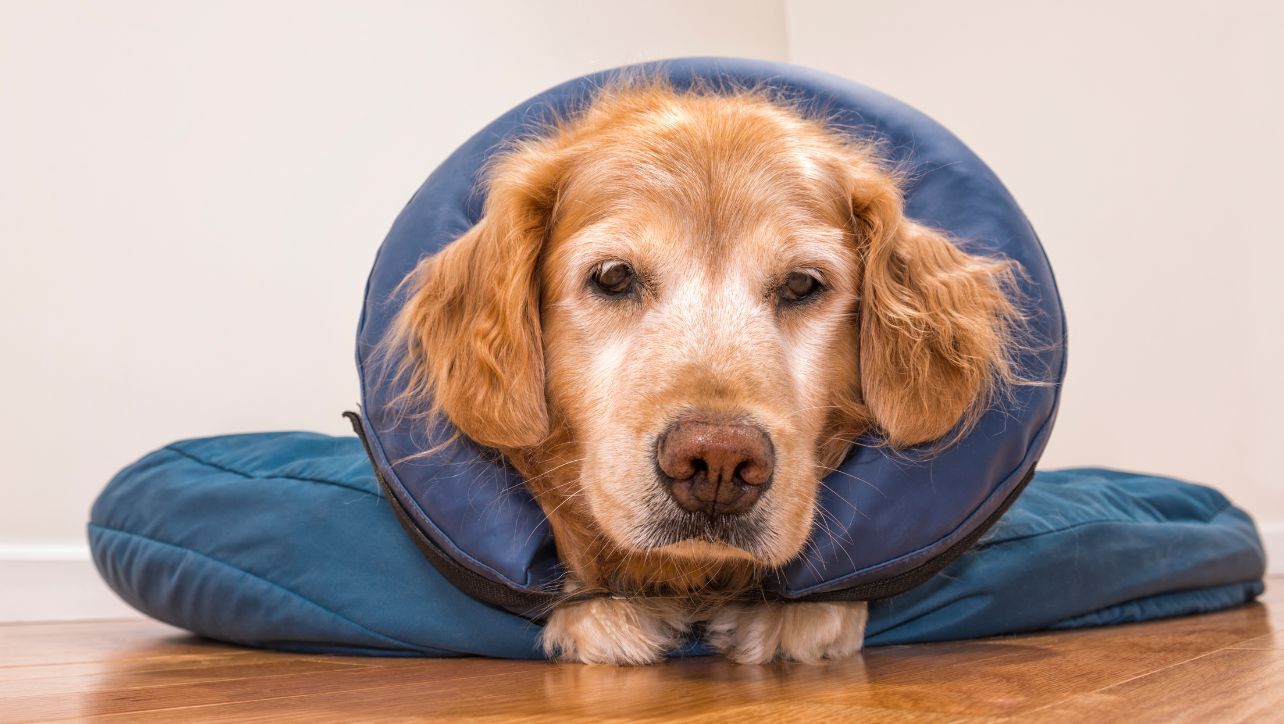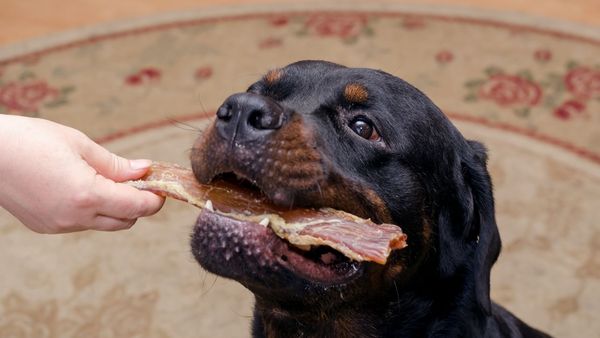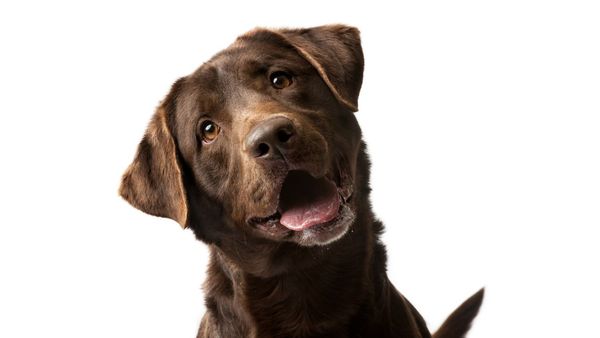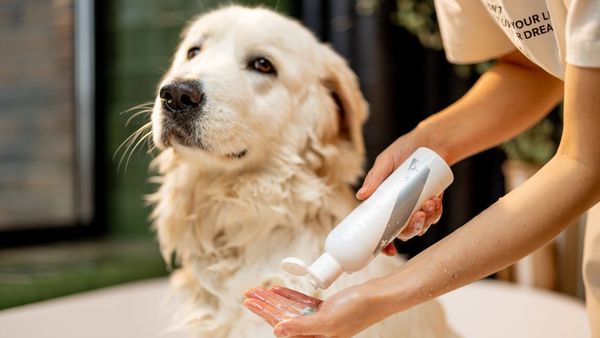As pet owners, we all want our dogs to be happy, healthy, and safe. But sometimes, our furry friends need a little extra help in the form of a medical treatment or surgical procedure. And that's where an Elizabethan collar or dog cone comes in.
Elizabethan collars, also known as E-collars, or dog cones, are protective devices designed to prevent dogs from licking, scratching, or gnawing at an injured or surgical site. The E-collar is a cone-shaped device that fits around your dog's neck, preventing them from accessing the affected area with their mouth or paw.
Some of them work with your dog's regular collar.
But have you ever wondered where these collars come from and how they came to be such a common fixture in veterinary medicine today?
A Brief Background on the Elizabethan Collar
The E-collar has been around for centuries, dating back to the Elizabethan era of the 16th century. Back then, these devices were not used to protect surgical sites on animals, but rather to prevent chewing or biting of the body.
As time went on, the E-collar was adapted for use in veterinary medicine, where it became a popular tool for preventing dogs from interfering with wounds or surgical incisions.
What is an Elizabethan collar used for?
Fast forward to modern times, and E-collars continue to play a critical role in canine health care.
After surgery, injuries, or skin conditions, dogs may be tempted to lick, scratch or bite the affected area, which can delay healing, cause infections, or even worsen the condition.
E-collars or recovery collars help to keep your dog's mouth and paws away from the area, while your dog heals.
Why do they call it an Elizabethan collar?
The Elizabethan collar gets its name from its resemblance to the ruffs that were worn during the Elizabethan era in England. These elaborate collars were worn by both men and women and were made of pleated linen or lace.
The E-collar or dog cone is similarly shaped like a cone, with a wide base that sits around the dog's neck and a narrow tip that extends upwards towards the head. The name "Elizabethan collar" has stuck over time, and it remains a popular term used to refer to this protective device for dogs.
Different Materials and Sizes of Elizabethan Collars
E-collars come in different sizes, types, and materials to accommodate various breeds and specific needs. Traditional E-collars or dog cones are made of sturdy plastic, but there are also softer, more flexible materials like foam and fabric. Soft collars are ideal for dogs with sensitive skin or those who find the rigid plastic dog cone collar uncomfortable.
The size of the E-collar your dog needs will depend on their breed and size. Larger breeds may need a longer or wider dog cone, while small breeds or puppies may require smaller ones.
Training Your Dog to Wear an Elizabethan Collar Comfortably
At first, your dog may find the E-collar uncomfortable or awkward to wear. But with a little patience and training, most dogs will adjust to wearing it within a day or two. Here are some tips for helping your dog adjust to wearing an E-collar:
- Introduce the collar gradually, with short periods of wear, to help your dog get used to the sensation.
- Offer treats and positive reinforcement when your dog is wearing the collar to create positive associations.
- Monitor your dog's behavior and remove the collar if they seem distressed or agitated.
Can My Dog Sleep With A Dog Cone On?
Yes, your dog can sleep with a cone on if necessary. However, sleeping with an E-collar can be uncomfortable for your dog, especially in the beginning when they are still adjusting to wearing it. Here are some tips to help your dog adjust to sleeping with a cone:
- Provide a comfortable sleeping area: Make sure your dog has a cozy and quiet place to sleep where they can rest undisturbed.
- Offer treats and positive reinforcement: Give your dog a treat or offer praise when you put the cone on or take it off to create positive associations.
- Monitor your dog's behavior: Keep an eye on your dog's behavior while they are wearing the cone, especially during the night. If your dog seems agitated or restless, it may be a sign that they are uncomfortable.
- Adjust the dog cone if necessary: Make sure the cone is fitted correctly and not too tight, causing discomfort for your dog.
It's important to follow your veterinarian's instructions for how long your dog should wear the cone, as this will depend on the type of injury or procedure they have undergone. In some cases, your veterinarian may recommend removing the cone during sleep to ensure your dog gets adequate rest.
Maintenance and Cleaning of Elizabethan Collars
E-collars can become dirty or smelly over time. To keep your dog's E-collar in good condition:
- Wipe it down with a damp cloth as needed to clean off dirt or grime.
- Avoid using harsh chemicals or cleaning agents that could irritate your dog's skin.
- Check the fit of the collar regularly, as it may need adjustments as your dog's condition changes.
Different Uses of Elizabethan Collars
E-collars or recovery collars are commonly used after surgical procedures to prevent dogs from licking or biting incisions. But they are also useful for preventing self-trauma from allergies, hot spots, and skin infections.
If your dog has an injury or sore that is not healing, an E-collar can give them the time they need to recover without further damage.

Good Alternatives To Dog Cones
While Elizabethan collars or dog cones are a popular choice for preventing dogs from licking or biting at an injury or incision, they may not be the best option for every dog. Here are some alternatives to dog cones:
- Inflatable collars: The inflatable collar functions similarly to an E-collar but is softer and more comfortable for your dog to wear. They work by creating a barrier around the neck that prevents access to the affected area. Click here to see our top recommendation on Amazon.
- Bite-not collars: These collars wrap around the dog's neck and shoulders, leaving their head free to move. They are designed to prevent the dog from bending their neck back to reach the incision site. Click here to see our top pick on Amazon.
- Medical pet shirts: These shirts are designed to cover the dog's torso, preventing them from accessing the affected area with their mouth or paws. They are especially helpful for injuries or incisions that are located on the dog's body. This link will take you to our top pick on Amazon.
- Socks and booties: If your dog has an injury or sore on their paw, covering it with a sock or bootie can help to prevent them from licking or biting at it. Here is our Amazon link for our favorite.
It's important to speak with your veterinarian before selecting an alternative to an E-collar. Depending on the type of injury or condition your dog has, they may need to wear an E-collar or a specific type of alternative collar to ensure proper healing.
Common Misconceptions and FAQs
There are a few common misconceptions about E-collars. For example, some people believe that they are cruel or uncomfortable for dogs to wear. However, when used correctly, E-collars are a safe and effective way to protect your dog's health and well-being.
Here are some FAQs about E-collars:
What is the difference between a dog cone and an e-collar?
There is no difference between a dog cone and an E-collar - they are the same thing. The term "cone" typically refers to the traditional plastic cone-shaped collar that fits around a dog's neck, while "E-collar" is a shortened version of Elizabethan collar, which is another name for the same device. Both terms are commonly used in veterinary medicine to describe the protective collar that helps prevent dogs from licking or biting at an injury or incision.
Is the cone of shame necessary?
In many cases, yes, the cone of shame (or E-collar) is necessary to promote proper healing and prevent further injury or infection. After surgery, injuries, or skin conditions, most dogs may be tempted to lick, scratch, or bite at the affected area, which can delay healing or cause infections. The E-collar helps keep your dog's mouth and paws away from the area, allowing it to heal properly.
While the cone of shame may not be the most comfortable or convenient option for your dog, it is an effective tool for promoting their health and well-being. If you are concerned about your dog's comfort level or have trouble getting them to adjust to wearing the E-collar, speak with your veterinarian about alternative options that may be suitable for your dog's specific needs.
Can my dog eat and drink with an E-collar on?
Yes, most dogs can. However, you may need to adjust the collar to provide access to the food and water bowl.
How long should my dog wear the E-collar?
The duration of use will depend on the type of injury or condition your dog has and your veterinarian's recommendation.
What if my dog doesn't like wearing the E-collar?
Try different types of collars or materials until you find one that suits your dog's needs. If your dog is still having trouble adjusting, speak with your veterinarian to explore other options.
In conclusion, Elizabethan collars have been around for centuries and continue to play an essential role in modern veterinary medicine. They are available in different types, sizes, and materials, making them indispensable when it comes to your pup's health and recovery after a surgery or procedure.
I hope this article has helped you in your search for an E-Collar for your furry friend and as always, get out there and Love Life!







